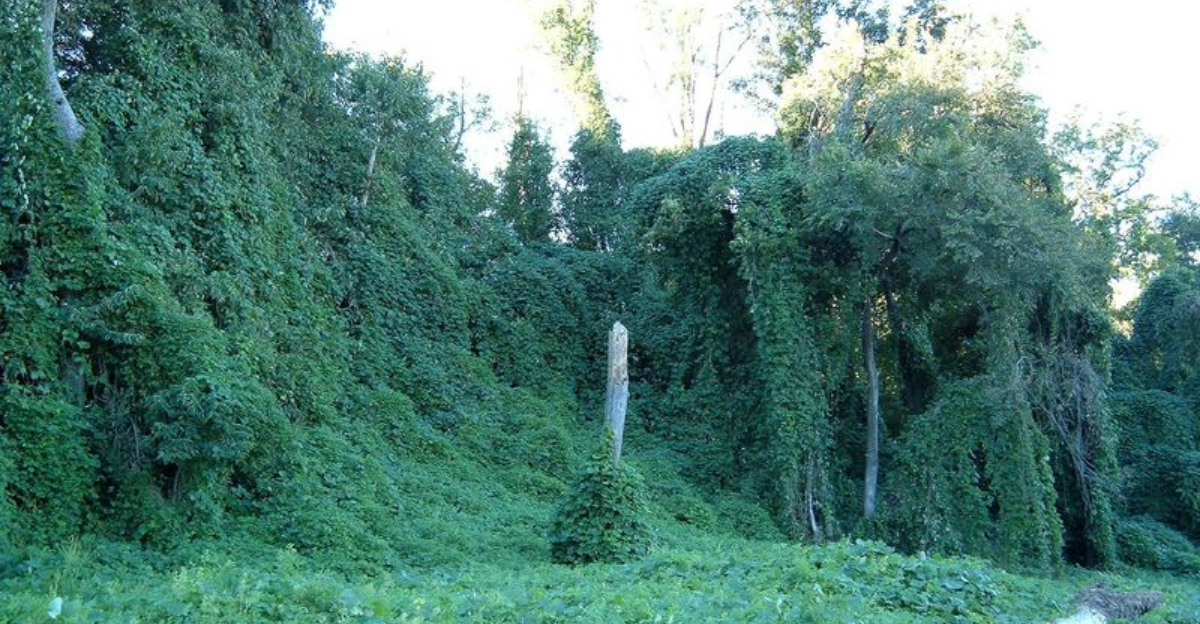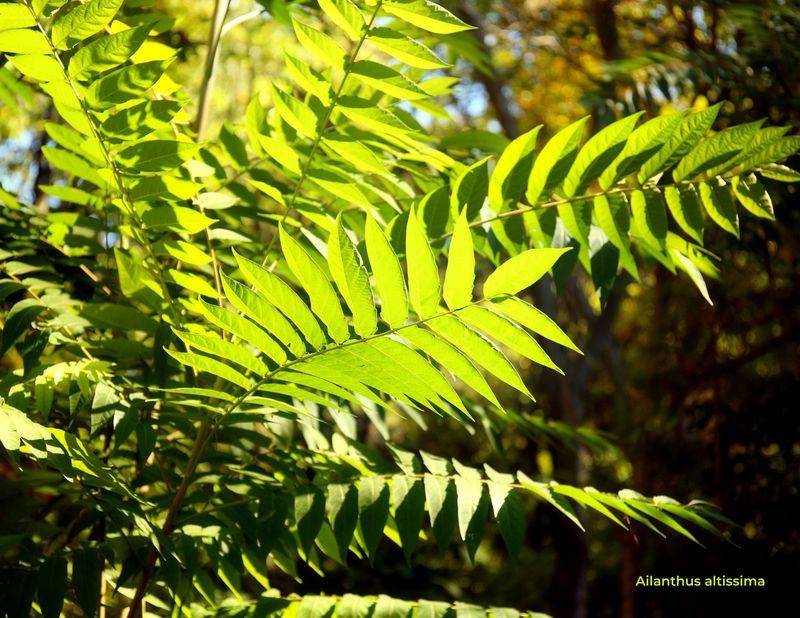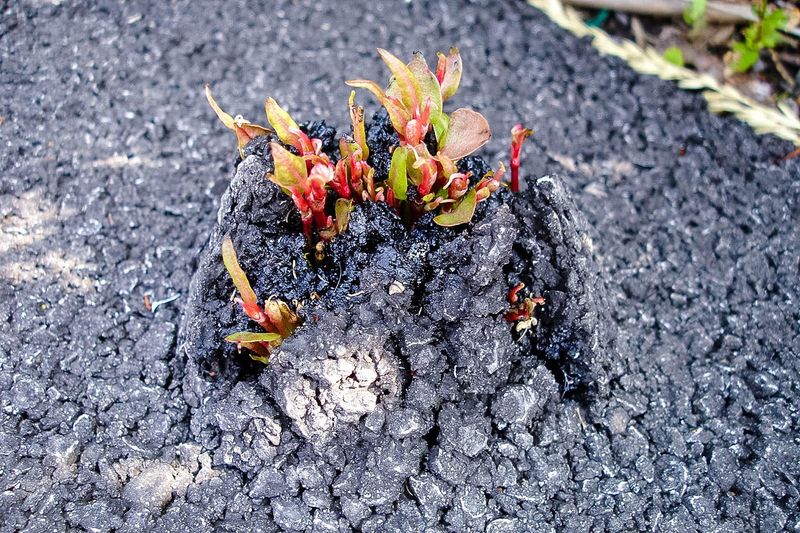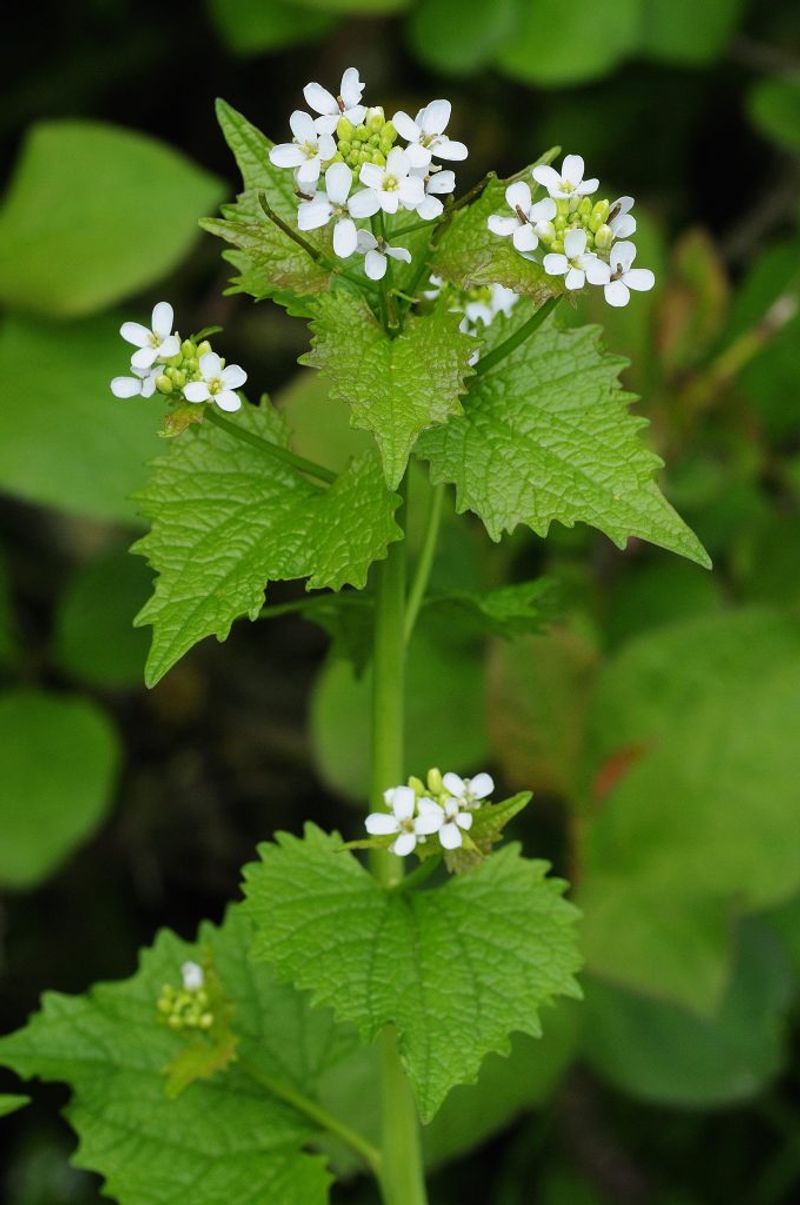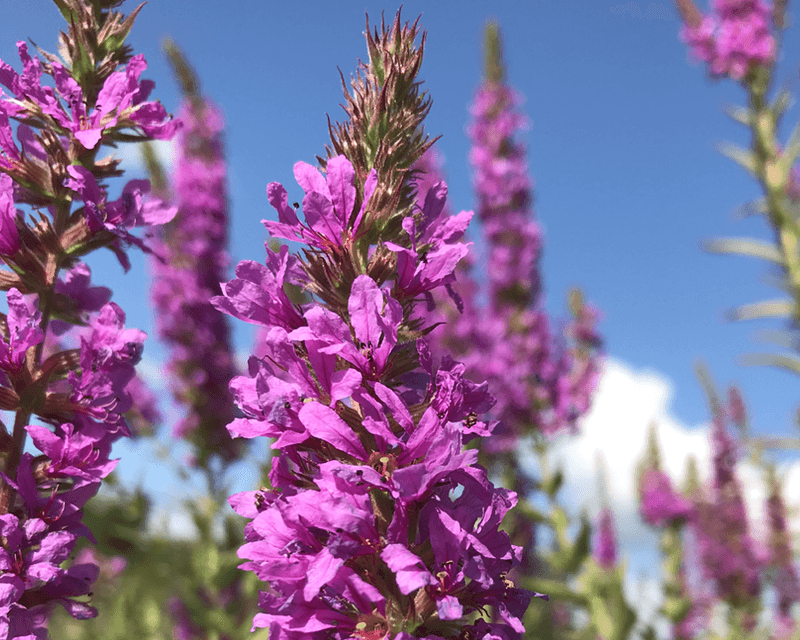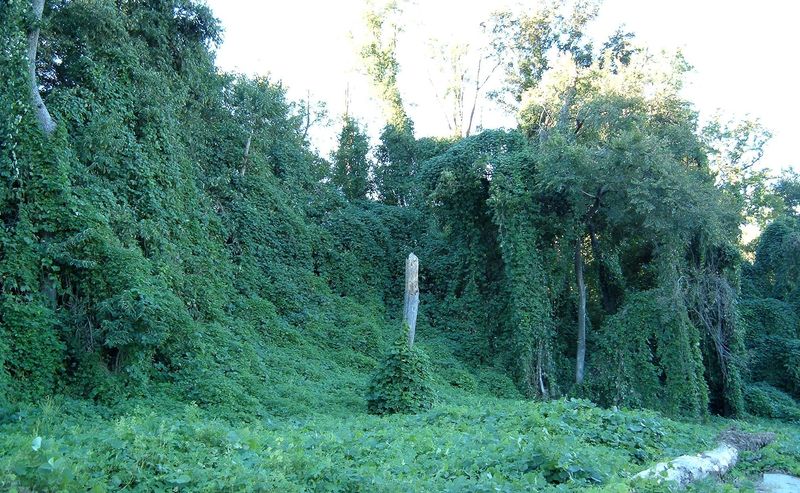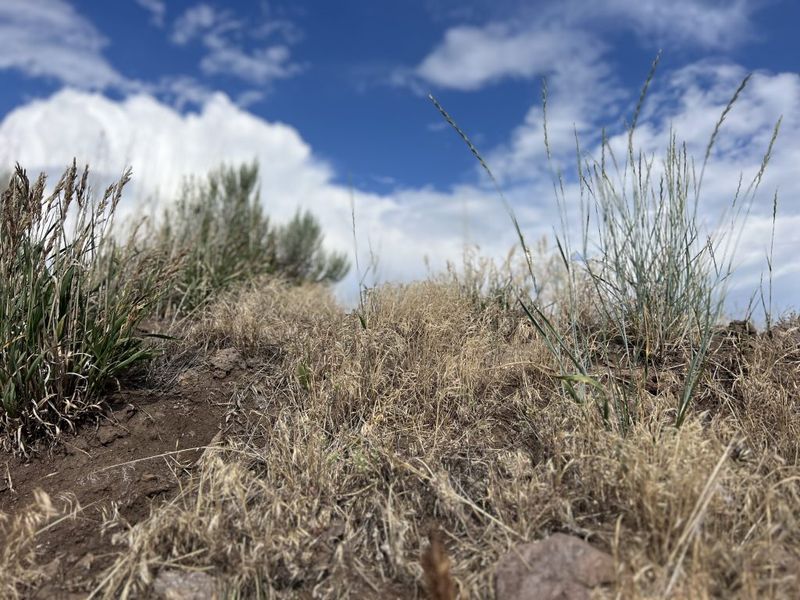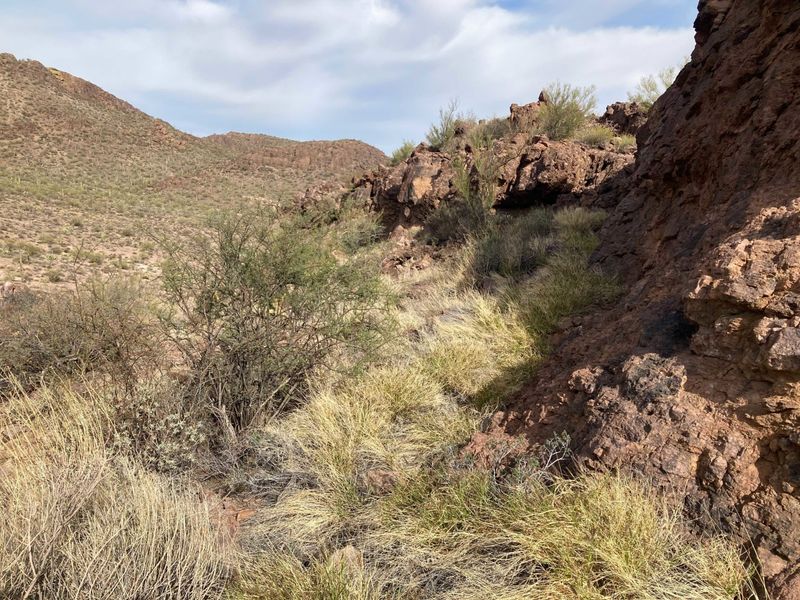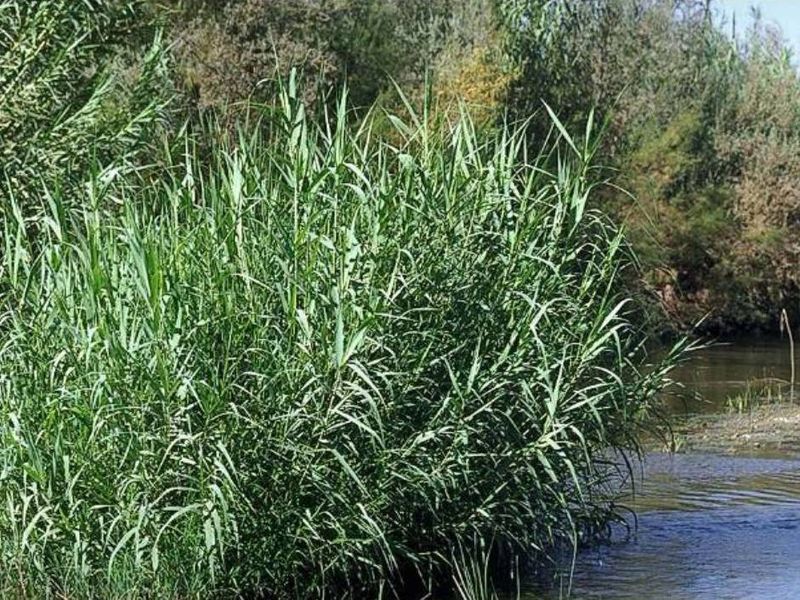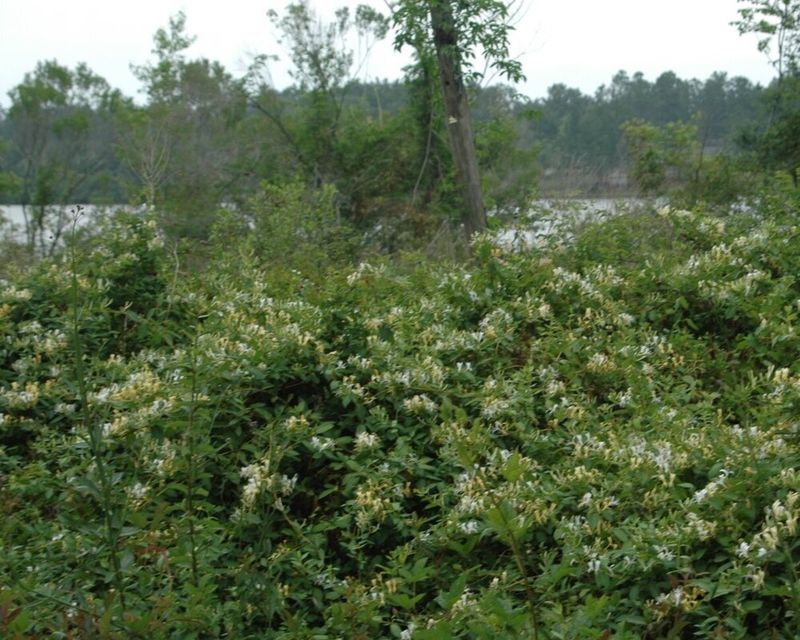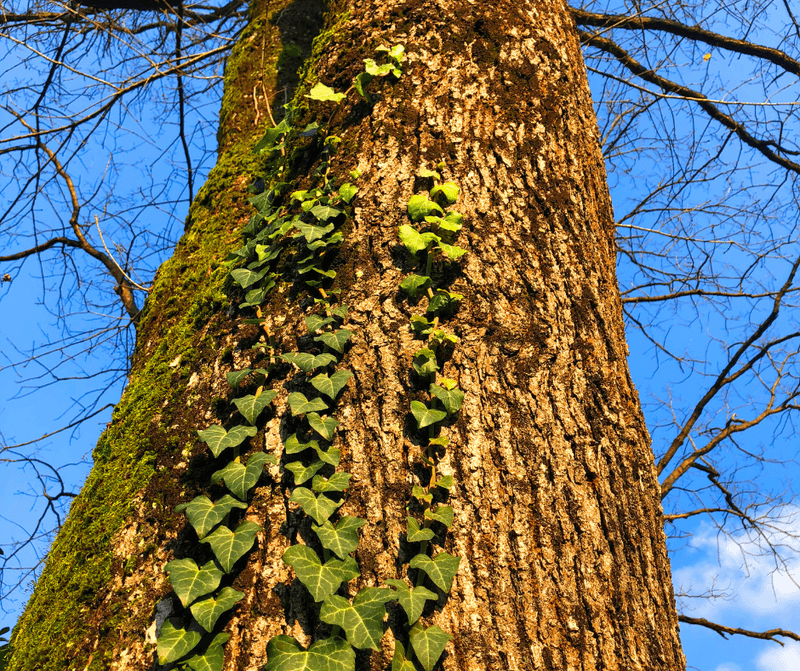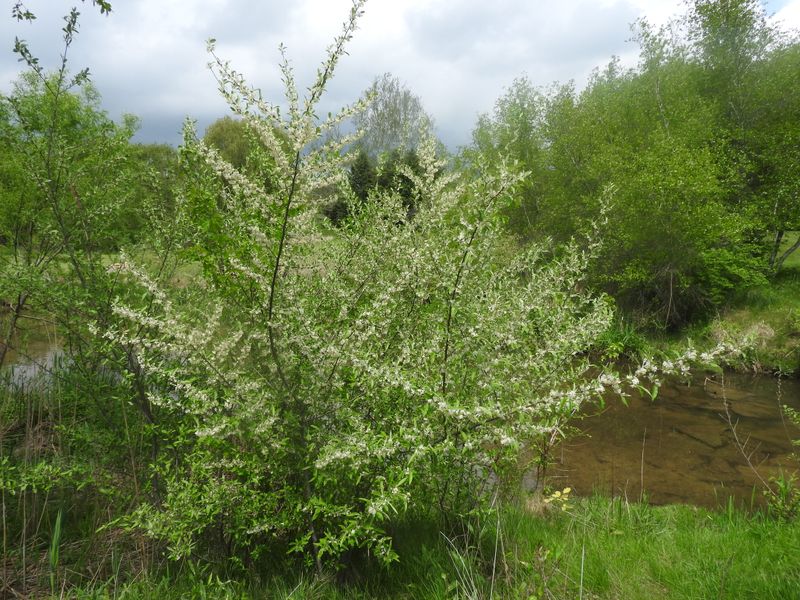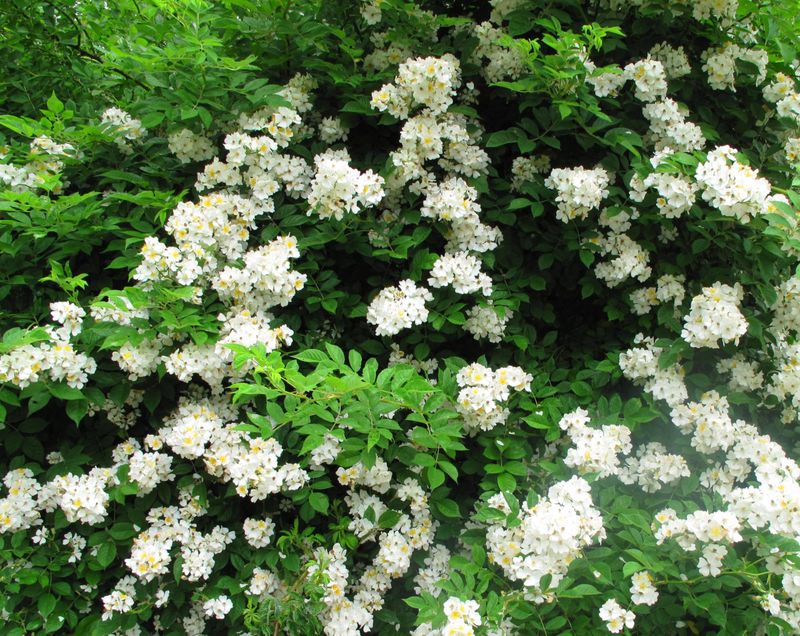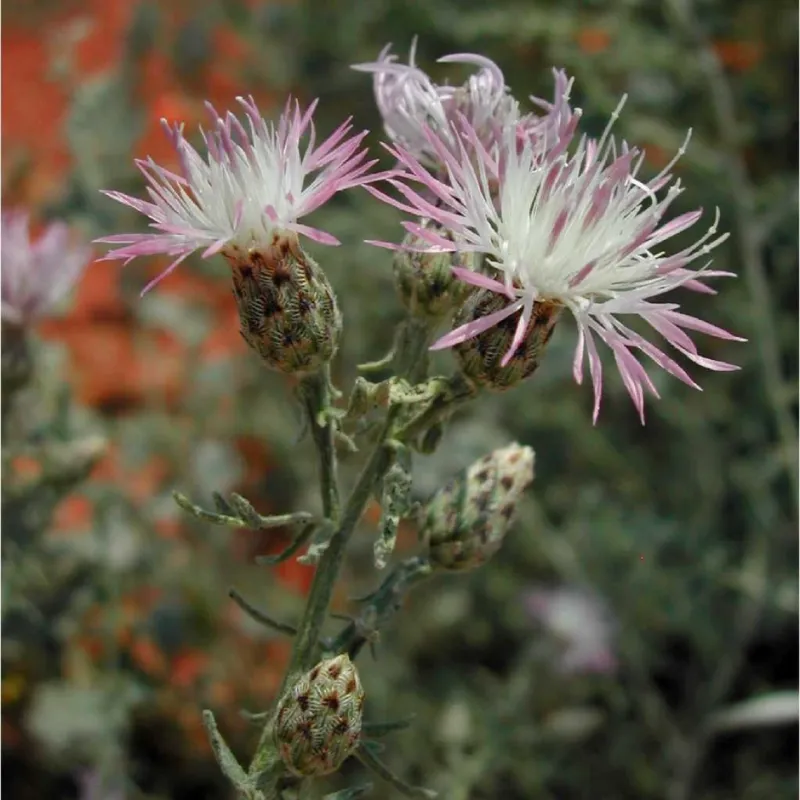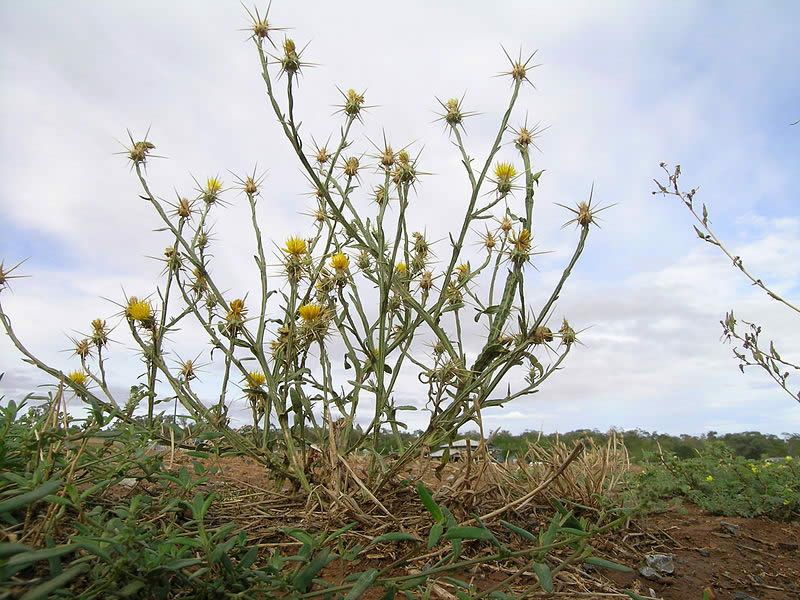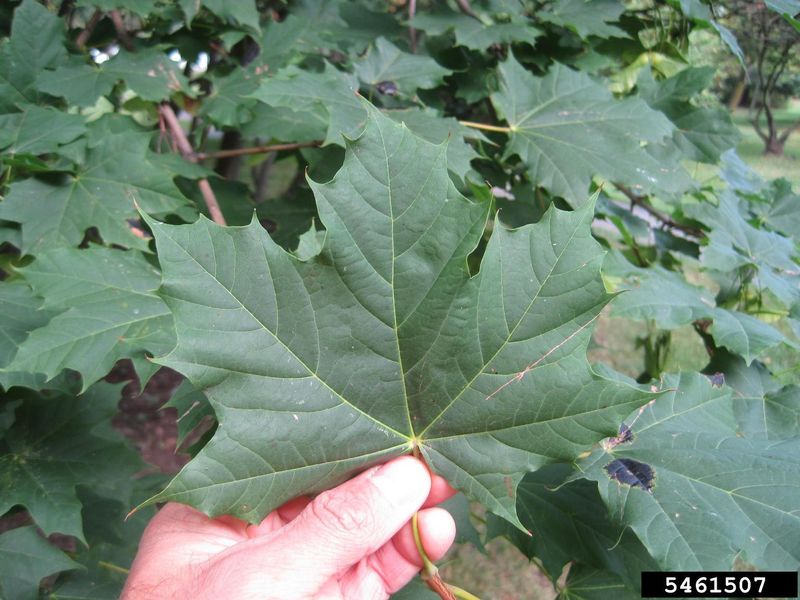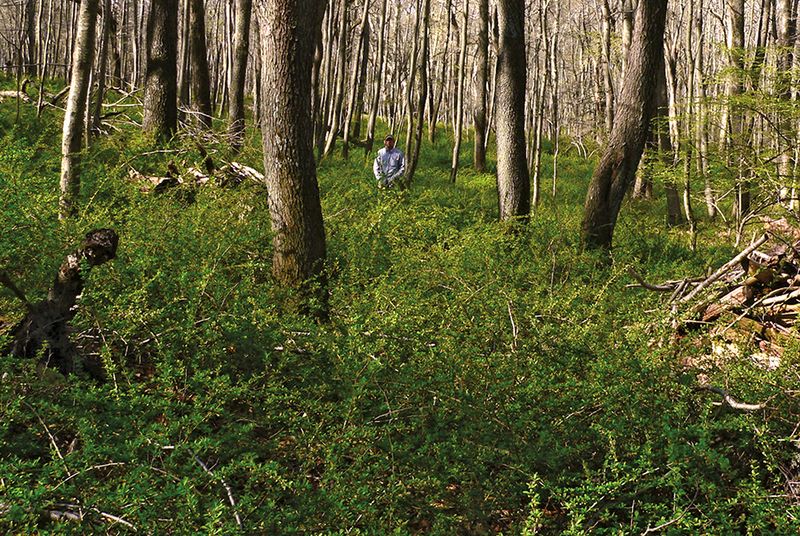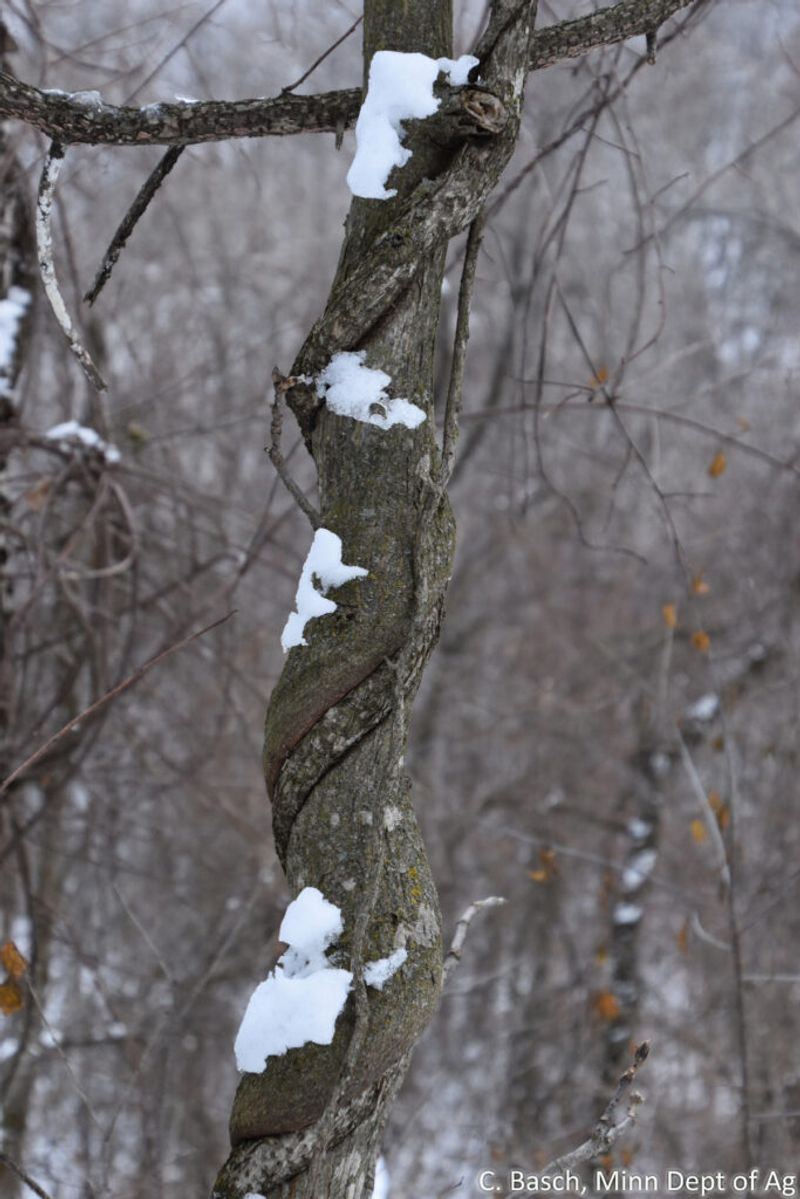Explore the often overlooked yet significant threat to our national parks: invasive species. These non-native plants can drastically alter ecosystems, outcompete native species, and pose severe ecological and economic challenges.
Here’s a closer look at 18 invaders causing concern across the nation’s treasured landscapes.
1. Tree-of-Heaven (Ailanthus altissima)
The Tree-of-Heaven might sound celestial, but its earthly impact is anything but. This fast-growing tree releases chemicals into the soil that inhibit the growth of other plants, essentially waging chemical warfare on its neighbors.
It’s a host for the spotted lanternfly, a pest with its own destructive tendencies.
In national parks, Tree-of-Heaven can quickly establish itself, altering plant communities and making it difficult for native species to thrive. Its adaptability and resilience make it a formidable invader.
2. Japanese Knotweed (Reynoutria japonica)
Japanese Knotweed is a master of destruction, with roots strong enough to damage buildings and roads. Picture a plant so aggressive that it can grow through concrete, pushing its way into cracks and causing significant structural damage.
In national parks, this invader displaces native vegetation, reducing biodiversity and altering the natural landscape. Japanese Knotweed poses a serious threat to infrastructure and ecosystems alike, making it a formidable adversary.
3. Garlic Mustard (Alliaria petiolata)
Garlic Mustard might be a culinary delight in the kitchen, but in forests, it’s a disruptive force. This biennial herb aggressively outcompetes native understory plants, creating a dense carpet that makes it difficult for other species to establish.
Moreover, it disrupts soil fungi essential for tree growth, further impacting the forest ecosystem. With its rapid spread and ability to alter soil chemistry, Garlic Mustard is a challenging invader to control.
4. Purple Loosestrife (Lythrum salicaria)
Purple Loosestrife might lure you in with its pretty purple flowers, but its impact on wetlands is severe. Imagine wetlands turning into a sea of purple, with native plants struggling to survive.
This invader reduces biodiversity and alters hydrology, affecting the entire ecosystem. Its aggressive nature and ability to spread rapidly make it a serious threat to wetland environments in national parks.
5. Kudzu (Pueraria montana)
Often called “the vine that ate the South,” kudzu is notorious for its rapid growth, covering anything in its path. Imagine a green veil draping over trees and structures, smothering them completely.
Kudzu’s resilience is matched only by its ability to outcompete native flora, creating monocultures that strip biodiversity. In the warm, humid climate of southeastern national parks, it’s a relentless invader.
Kudzu spreads not only by seeds but also through its strong roots, which can extend several meters. Controlling this vine is challenging, requiring persistent management efforts.
6. Cheatgrass (Bromus tectorum)
Cheatgrass might look innocuous, but it’s a fire starter in disguise. Common in western national parks, this grass increases fire frequency and intensity, altering the natural fire regime and impacting native plant communities.
Imagine a landscape where fire becomes a regular visitor, fueled by the dry, fast-burning cheatgrass. Its presence creates a cycle of destruction that’s difficult to break, making it a persistent invader in these regions.
7. Buffelgrass (Cenchrus ciliaris)
Buffelgrass was introduced for erosion control, but it’s now a wildfire catalyst in desert ecosystems. Picture a desert landscape where this grass fuels intense fires, transforming fire-resistant areas into charred remnants.
Its dense growth and rapid spread make it a formidable invader, challenging native plant survival and altering habitats. Buffelgrass turns deserts into fire-prone areas, requiring vigilant management to control its spread.
8. Giant Reed (Arundo donax)
Giant Reed stands tall and imposing along riparian zones, dominating its surroundings. Imagine towering grasses overshadowing native species, altering stream flows and displacing wildlife.
This invader disrupts the delicate balance of riparian ecosystems, impacting everything from plant diversity to water availability. Its ability to spread rapidly makes it a significant threat to national park waterways.
9. Saltcedar (Tamarix ramosissima)
Saltcedar, with its feathery foliage, seems harmless but consumes large amounts of water and increases soil salinity. Picture a landscape where native plants struggle to survive due to heightened salinity levels.
This invader alters water tables and outcompetes native vegetation, posing a severe threat to the ecological balance of national parks. Managing Saltcedar requires significant effort, given its resilience and adaptability.
10. Japanese Honeysuckle (Lonicera japonica)
Japanese Honeysuckle weaves a dense, suffocating blanket over native plants, depriving them of light and resources. Visualize a forest floor carpeted with this vine, suppressing everything beneath it.
Its vigorous growth makes it a formidable competitor, quickly covering large areas and impacting biodiversity. Controlling Japanese Honeysuckle is challenging, requiring persistent efforts to keep this invader in check.
11. English Ivy (Hedera helix)
English Ivy drapes itself over trees and structures, creating a green cascade. This picturesque vine, however, climbs and smothers trees, leading to canopy loss and habitat degradation.
Its ability to root along any surface makes it particularly invasive, threatening forests and parks alike. Controlling English Ivy requires vigilance and effort, as it can quickly rebound after removal.
12. Autumn Olive (Elaeagnus umbellata)
Autumn Olive might have been introduced for wildlife habitat, but it’s now a pervasive invader. Picture open fields and forests overtaken by dense thickets of this shrub.
Its ability to fix nitrogen allows it to thrive in poor soils, outcompeting native plants. The resulting monocultures reduce plant and animal diversity, posing a significant challenge for park managers.
13. Multiflora Rose (Rosa multiflora)
Multiflora Rose forms dense, impenetrable thickets that are both a barrier and a bane for native species. Imagine trying to navigate through a tangled mass of thorny vines, with native plants struggling to find space to grow.
This shrub was initially introduced for erosion control and hedging, but its invasive nature has since overshadowed any benefits. Managing Multiflora Rose requires consistent effort to prevent its spread.
14. Spotted Knapweed (Centaurea stoebe)
Spotted Knapweed might seem unassuming, but it has a toxic secret. This plant releases allelopathic chemicals into the soil, inhibiting the growth of other plants. Imagine a landscape where native flora struggles to gain a foothold.
In national parks, Spotted Knapweed alters plant communities and reduces biodiversity. Its aggressive nature and resilience make it a persistent challenge for conservation efforts.
15. Yellow Starthistle (Centaurea solstitialis)
Yellow Starthistle, with its bright yellow blooms, is toxic to horses and invades grasslands, reducing forage quality. Picture a once-lush field now dominated by this spiky plant, deterring grazing animals and impacting the ecosystem.
Managing Yellow Starthistle is crucial to maintaining healthy grasslands in national parks. Its ability to spread rapidly makes it a formidable opponent for land managers.
16. Norway Maple (Acer platanoides)
The Norway Maple might provide ample shade, but it’s a shadowy figure in our forests. Its dense canopy shades out native understory plants, altering forest composition and reducing biodiversity.
This tree’s adaptability and resilience make it a popular choice in urban areas, but in national parks, it competes with native species, posing a significant challenge for conservation efforts.
17. Japanese Barberry (Berberis thunbergii)
Japanese Barberry is more than a thorny shrub; it’s an ecological disruptor. By altering soil chemistry and providing habitat for ticks, it poses a dual threat to forests.
Imagine walking through a forest and encountering dense clusters of this shrub, outcompeting native plants and impacting wildlife. Controlling Japanese Barberry is essential to maintaining ecological balance in national parks.
18. Oriental Bittersweet (Celastrus orbiculatus)
Oriental Bittersweet is a vine with a deadly embrace. It girdles and topples trees, disrupting forest structure and paving the way for further invasions. Picture a once-stable forest now scattered with fallen trees, victims of this invasive vine.
Controlling Oriental Bittersweet requires vigilance and effort, as it can quickly spread and cause significant ecological damage. Its impact on national parks is profound, requiring dedicated management strategies.
